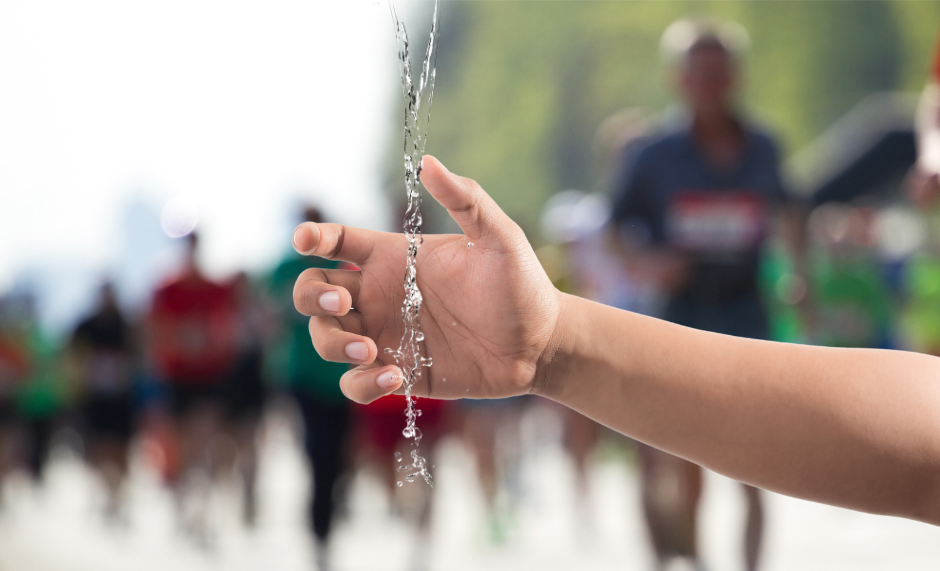Cup-less events: Wait…are there really no cups?
Yes, really.
The rise of cup-less events has been inevitable with the drive towards more environmentally sustainable events and phasing out single use…well single use everything really.
Navigating event hydration stations through a traffic jam of runners also wanting a drink, trying to aim a splash of water into your mouth on the move before flinging your half full, hardly used cup at a bin, is not really the hydration you need for your best performance.
And let's be real, you fend for yourself for hydration through all those months of training, and unless you're at the elite end of the spectrum looking to snag a gulp from a preferred cup on your way to a podium finish, managing your hydration on race day should be easy peasy without sacrificing a PB.
Another bonus of being self sufficient is you have access to fluid when you want it, not when you happen to pass a hydration station on course.
We’ve combed some recent popular runner’s blogs for experienced advice on hydration and combined it with our recommendations on hydration devices thanks to FuelMe and Ultimate Direction.
Did you know most runners sweat between 400 to 2,400ml per hour of exercise, with the average value being around 1,200ml per hour?
‘You don’t need to replace that amount while you’re running, but we do encourage for that to be replaced within one and a half to two hours of finishing,’ advises sports dietician and Runner’s World columnist Renee McGregor. ‘It would be impossible to drink that volume while you are running but that’s why recovery is so important.’
‘If you’re running for under an hour, you probably don’t need to take a drink with you, as long as you’re hydrated beforehand, says McGregor. ‘Once you start getting into running for 90 minutes, that’s when you need to think about carrying a drink around with you,’ she says.
If you’re new to the world of BYO hydration devices, here’s what you need to know to stay hydrated without slowing down.
Choosing your hydration device
It might surprise you to learn just how many hydration devices there are on the market for runners, and each has its pros and cons. Here are a few of the most popular choices and what to consider for cupless events.
Collapsible cups have been designed with events in mind - the soft cup can be stashed in your shorts pocket, running belt, or even under a bra strap…and springs open for a quick fill by the lovely volunteers at the hydration station.
Hand-held or hydration belt/vest bottles covers a huge range of products! Bottles can be hard or soft (soft flasks make it easier to squash them back into a pocket when empty), and range in volume usually from 250ml to 750mls. Carrying multiple smaller bottles in a vest or belt also lets you have a bonus bottle stashed with electrolyte drink.
If you do need a top up, hand held bottles are pretty quick and easy to refill; just prepare your bottle on the approach to the hydration station if you have an eye on the time - have the lid off and be ready for the refill.
Hydration backpacks hold the most liquid of all hydration options - typically a few litres, and depending on the length of your event, you’re unlikely to need to refill at all.
With that volume comes weight, and often a bit of bounce and jiggle that can be annoying.
Plus, if you need a top up, refilling a backpack reservoir takes more effort and time.
Overall: unless you’re planning on being out there for hours - a backpack would be overkill for many events.

